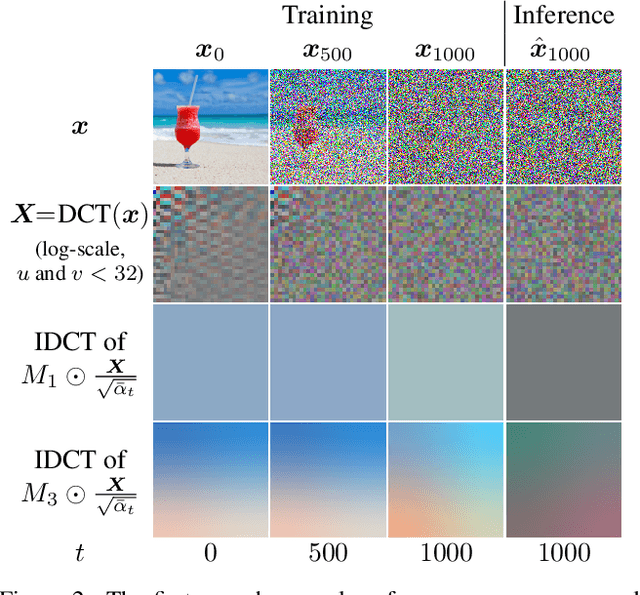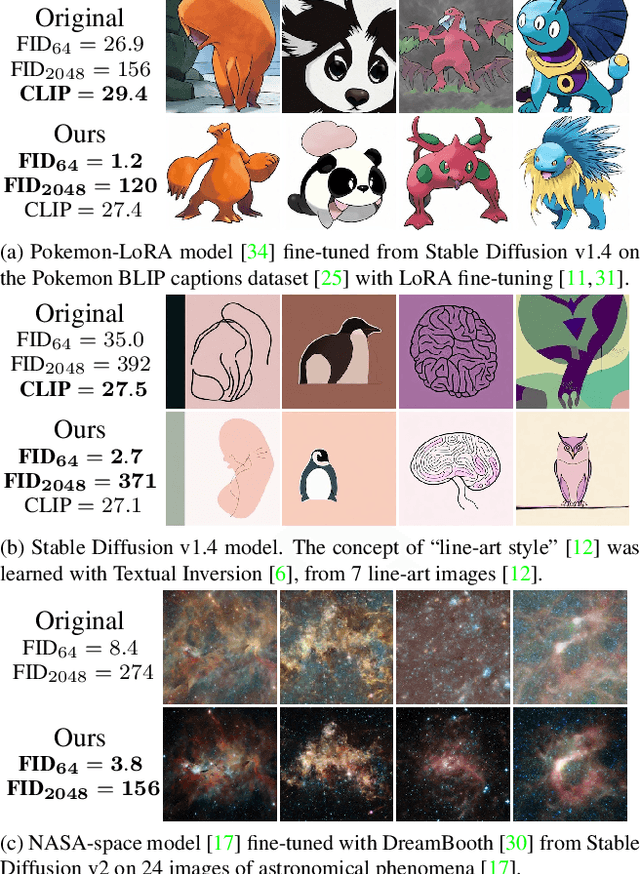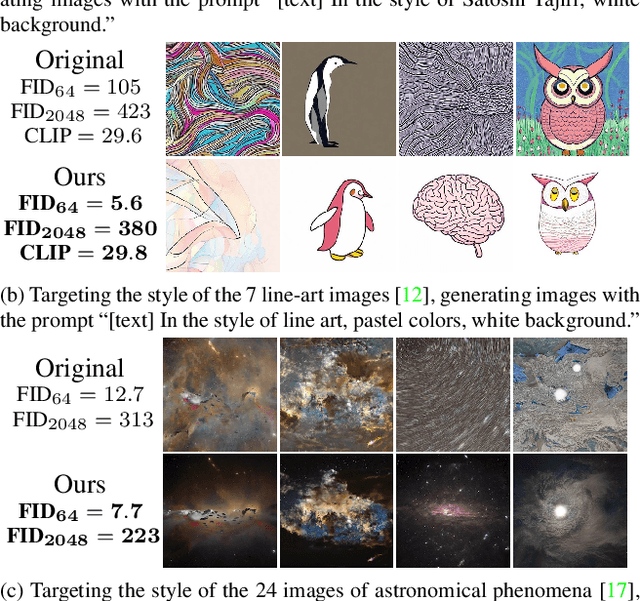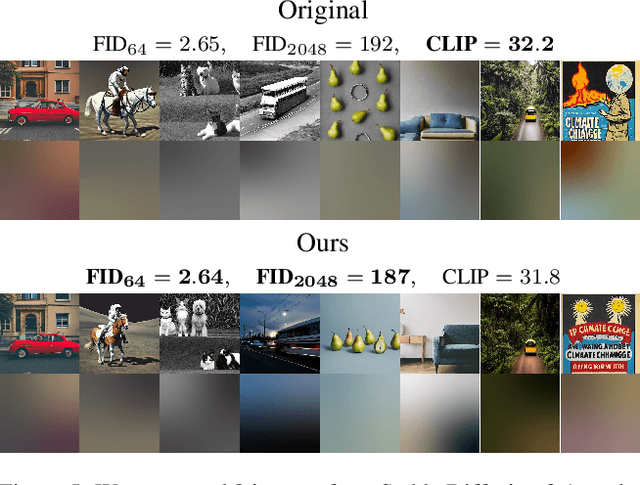Martin Nicolas Everaert
Exploiting the Signal-Leak Bias in Diffusion Models
Sep 27, 2023



Abstract:There is a bias in the inference pipeline of most diffusion models. This bias arises from a signal leak whose distribution deviates from the noise distribution, creating a discrepancy between training and inference processes. We demonstrate that this signal-leak bias is particularly significant when models are tuned to a specific style, causing sub-optimal style matching. Recent research tries to avoid the signal leakage during training. We instead show how we can exploit this signal-leak bias in existing diffusion models to allow more control over the generated images. This enables us to generate images with more varied brightness, and images that better match a desired style or color. By modeling the distribution of the signal leak in the spatial frequency and pixel domains, and including a signal leak in the initial latent, we generate images that better match expected results without any additional training.
Scene relighting with illumination estimation in the latent space on an encoder-decoder scheme
Jun 03, 2020



Abstract:The image relighting task of transferring illumination conditions between two images offers an interesting and difficult challenge with potential applications in photography, cinematography and computer graphics. In this report we present methods that we tried to achieve that goal. Our models are trained on a rendered dataset of artificial locations with varied scene content, light source location and color temperature. With this dataset, we used a network with illumination estimation component aiming to infer and replace light conditions in the latent space representation of the concerned scenes.
 Add to Chrome
Add to Chrome Add to Firefox
Add to Firefox Add to Edge
Add to Edge